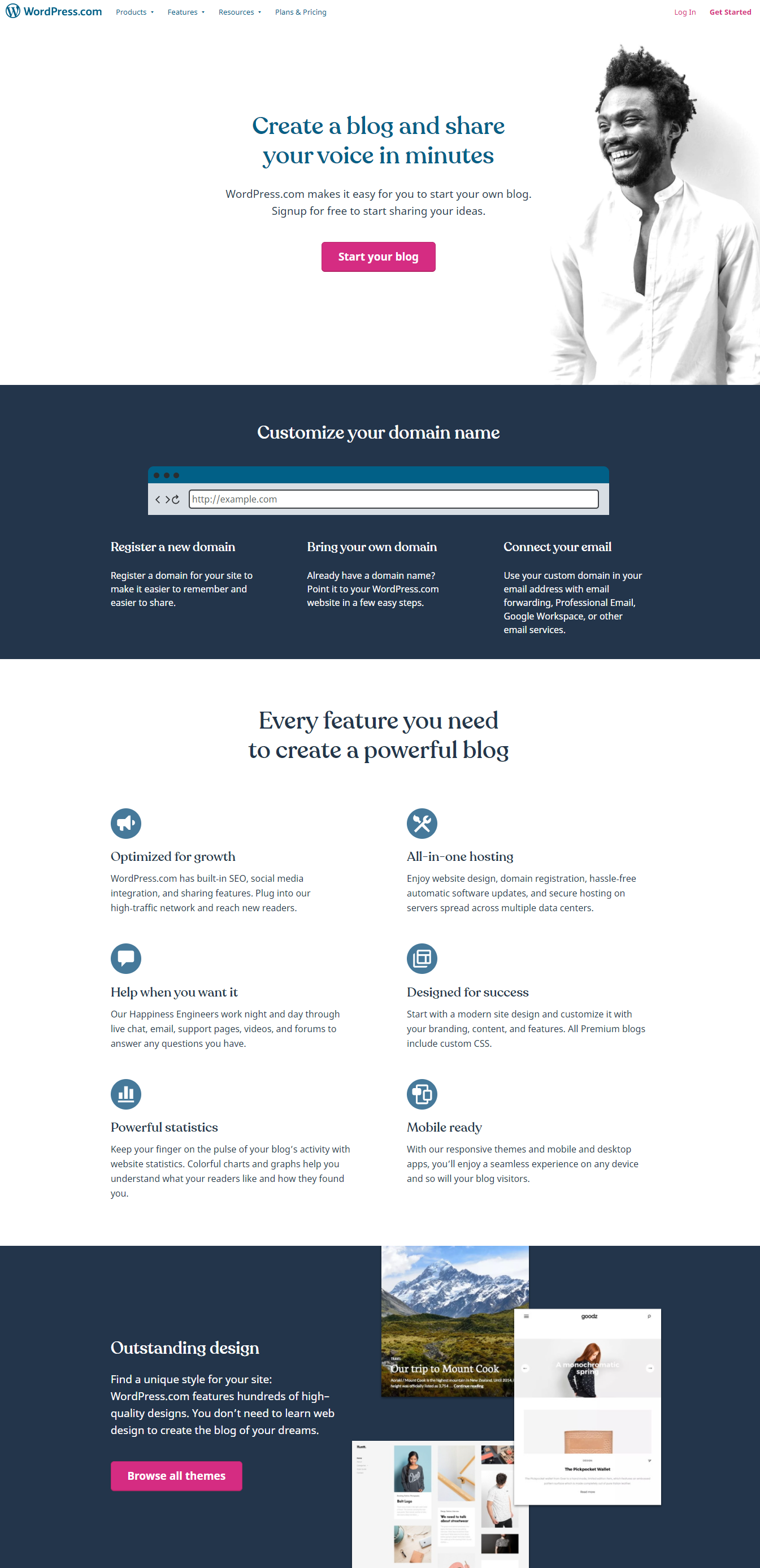Starting a blog page can be a rewarding and thrilling journey, whether you’re looking to reveal your passion, establish an online occurrence, or earn income. This specific guide will walk you through the essential procedure for create the successful blog coming from scratch.
Step 1: Define Your Specialized niche
Before diving straight into the technical elements of blogging, it’s crucial to determine your blog’s market. A niche is some sort of specific topic or perhaps area of attention that your particular blog can concentrate on. Popular niche categories include travel, meals, lifestyle, fashion, technologies, personal finance, in addition to more. Pick a market you are excited about and that has an audience keen to consume your content.
Tips for Deciding on Your Niche:
Interest: Come up with something you love; it will always keep you motivated.
Knowledge: Consider your skills and knowledge. Viewers seek valuable and even insightful content.
Audience Demand: Research typically the popularity of your respective specific niche market to ensure it has an audience.
Step 2: Select a Blogging Platform
Selecting the most appropriate platform is definitely essential for your achievement of your blog site. Some popular platforms include WordPress. org (self-hosted), WordPress. com, Blogger, and Wix. Each platform provides different levels of customization, ease involving use, and scalability.
Why WordPress. org is Recommended:
Total control over your web site and content.
Access to thousands associated with plugins and topics for customization.
Better opportunities for monetization.
Stage 3: Select a Domain name Name and Website hosting
Your domain title can be your blog’s address online. It ought to be catchy, highly relevant to your niche, and easy to remember. As soon as you’ve picked some sort of domain name, you’ll need a web hosting provider to store your blog’s data and make it accessible on the web.
Popular Hosting Companies:
Bluehost: Known with regard to its affordability and ease of integration with WordPress.
SiteGround: Offers excellent customer service and reliable performance.
HostGator: Provides budget friendly plans and the user-friendly interface.
Phase 4: Install Live journal and Set Up Your Blog
Most web hosting providers offer one-click WordPress installation. When WordPress is set up, you can start off customizing your blog’s appearance and adjustments.
Basic Setup Duties:
Choose a Theme: Select a receptive and visually interesting theme that lines up along with your niche.
Mount Essential Plugins: Plug ins add functionality to be able to your blog, this kind of as SEO search engine optimization, contact forms, and security. Key plug ins include Yoast SEARCH ENGINE OPTIMISATION, Akismet Anti-Spam, and Jetpack.
Create Key Pages: Set upwards essential pages like Home, About, Contact, and Privacy Insurance plan.
Step 5: Write and Publish Content
Content is the heart of your own blog. High-quality, helpful, and engaging written content will attract visitors and keep them approaching back. Start by developing a content prepare with a combine of topics that will appeal to the people in your target market.
Content Creation Ideas:
Write with Objective: Ensure every post offers value and solves a trouble for your readers.
Use Engaging Headers: A compelling topic will grab focus and increase click through rates.
Add Photos and Multimedia: Pictures choose your content more engaging and shareable.
Step six: Optimize Your Blog for SEARCH ENGINE OPTIMISATION
Search Engine Marketing (SEO) is vital for driving organic and natural traffic to your website. It involves customizing your blog’s articles and structure in order to better search engine positions in search engine results.
Basic SEO Tips:
Employ Keywords Strategically: Contain relevant keywords obviously in your posts.
Optimize Meta Descriptions and Titles: Get them to be catchy and precisely describe your content.
Improve Load Speed: A fast-loading weblog improves user knowledge and SEO search positions.
Step 7: Promote The Blog
Creating great content is just the first step; you also need to be able to promote it. Utilize Content calendar for your blog , email marketing, and guest submitting on other websites to increase the reach.
Promotion Strategies:
Social media marketing: Share your own posts on websites like Facebook, Facebook, Instagram, and Pinterest.
Email Marketing: Build an email listing to notify readers of recent posts and updates.
Networking: Engage with other writers in your market by commenting on the posts and taking part in online communities.
Action 8: Monetize Your Blog
After getting constructed an audience, you could start exploring ways to monetize your weblog. Popular monetization methods include:
Monetization Choices:
Affiliate Marketing: Showcase products or providers and earn some sort of commission on revenue generated from your links.
Ad Networks: Display ads on the blog site through networks like Google AdSense.
Sponsored Content: Acquire manufacturers for sponsored articles or reviews.
Electronic digital Products: Sell e-books, courses, or online resources.
Step nine: Analyze and Boost
Regularly analyze your current blog’s performance using tools like Search engines Analytics. Track your traffic, identify well-liked content, and appearance for areas of which need improvement.
Target Areas for Development:
Content Quality: Consistently update and better your posts.
SEO Marketing: Stay updated within the latest SEO styles and techniques.
End user Experience: Make your current blog easy in order to navigate and aesthetically appealing.
Summary
Beginning a blog involves careful planning, devotion, and continuous understanding. By following this specific step-by-step guide, you’ll be well soon on your way creating a successful and profitable blog site. Remember, consistency will be key—keep creating valuable content, engaging together with your audience, and improving your skills. Happy blogging!
